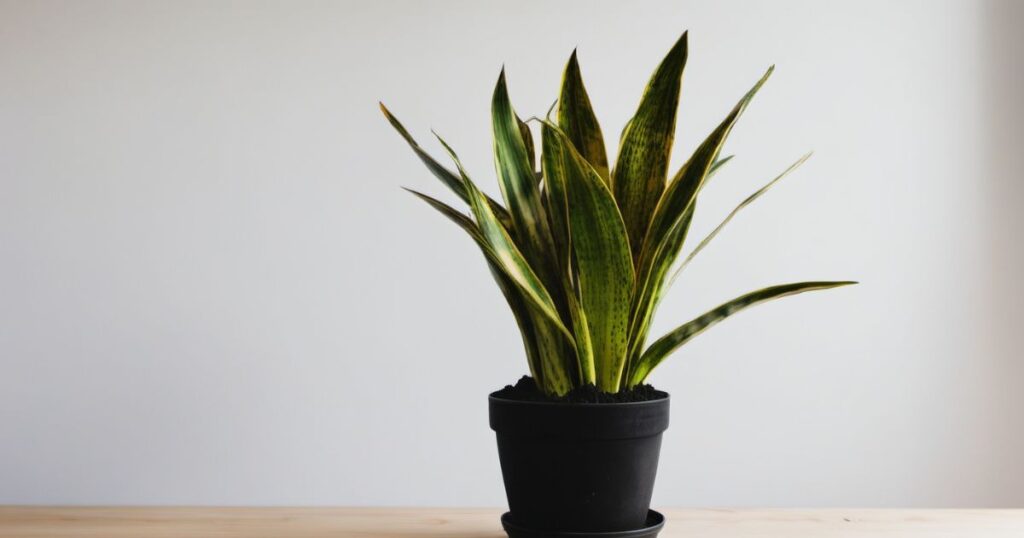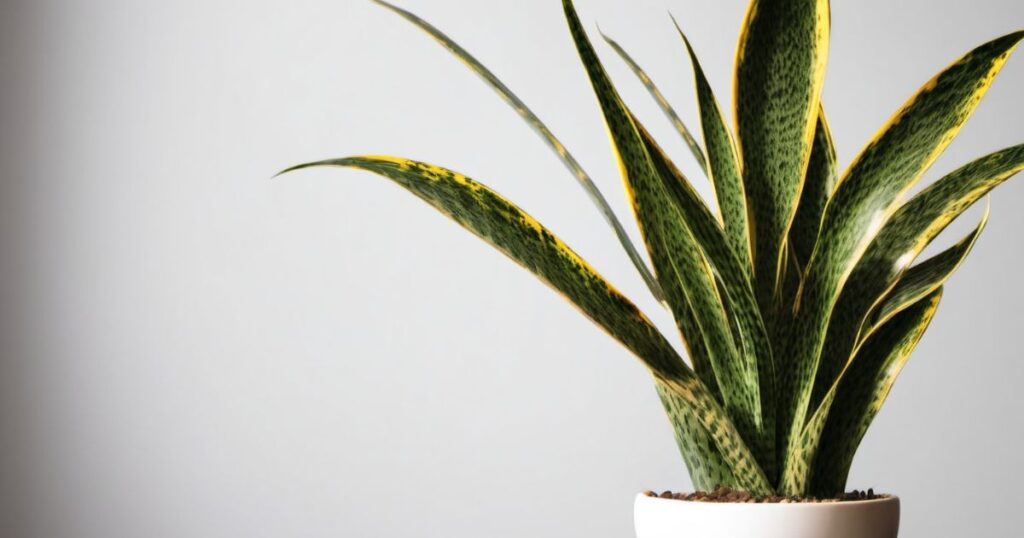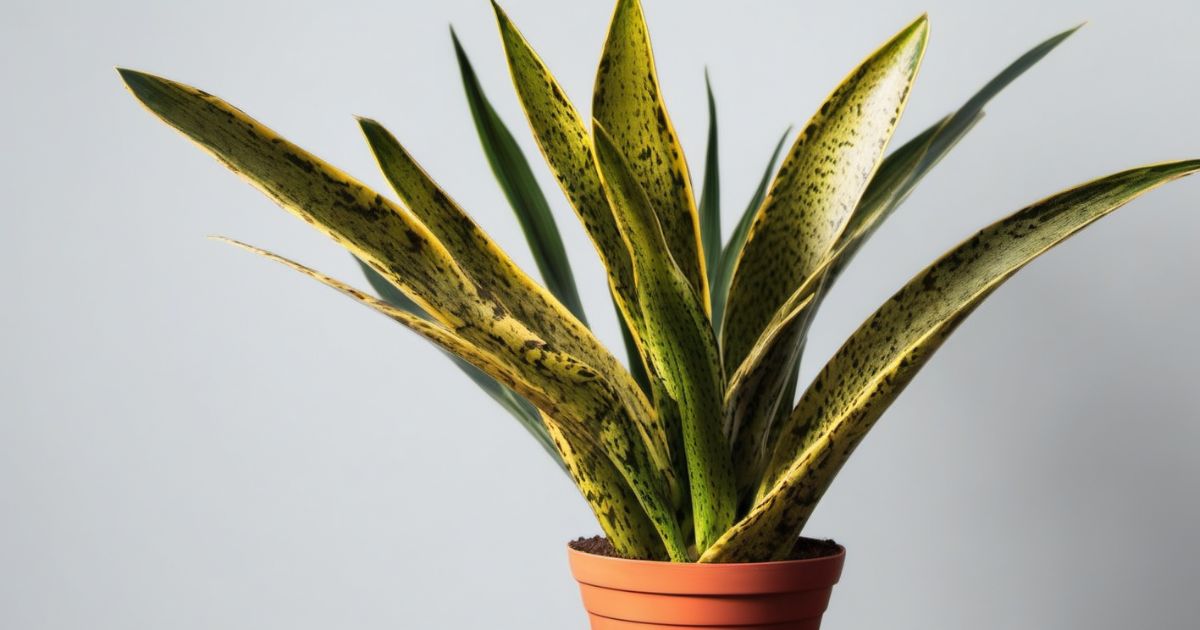The snake plant, also known as mother-in-law’s tongue, is a striking and low-maintenance indoor plant that has captured the hearts of plant enthusiasts worldwide. With its tall, upright leaves and architectural form, it adds a touch of elegance to any living space. Whether you’re a seasoned gardener or a newcomer to the world of houseplants, this guide will equip you with the knowledge and tips you need to grow and care for your snake plant successfully.
The allure of the snake plant lies in its ability to thrive in various conditions, making it an excellent choice for both beginners and experienced plant parents. Its resilience and adaptability have earned it a reputation as a virtually indestructible houseplant. However, like any living organism, it requires proper care and attention to flourish and maintain its vibrant appearance.
In this comprehensive guide, we’ll delve into every aspect of snake plant care, from watering and soil requirements to propagation techniques and troubleshooting common issues. By following these guidelines, you’ll unlock the secrets to cultivating a stunning and healthy snake plant that will grace your home for years to come.
| Common Name | Snake plant, mother-in-law plant, mother-in-law’s tongue |
| Botanical Name | Dracaena trifasciata |
| Family | Asparagaceae |
| Plant Type | Evergreen perennial typically grown as a houseplant |
| Mature Size | 6 inches to 12 feet tall in native habitat depending on variety; typically 2 feet tall when grown as a houseplant |
| Sun Exposure | Sun to part shade |
| Soil Type | Sandy, well-drained |
| Soil pH | Slightly acidic to slightly alkaline |
| Bloom Time | Spring |
| Flower Color | White |
| Hardiness Zones | 9–11 (USDA) |
| Native Area | West Africa |
| Toxicity | Toxic to cats and dogs |
Snake Plant Care
Caring for a snake plant is relatively straightforward, but understanding its specific needs is crucial for its well-being. Here’s what you need to know:
Light
Snake plants thrive in both bright, indirect light and low-light conditions, making them versatile houseplants. However, they prefer bright, filtered sunlight to maintain their vibrant coloration and compact growth habit. Avoid direct sunlight, as it can scorch the leaves. If the plant is not receiving enough light, it may become leggy and stretch toward the light source.
Soil
Snake plants prefer well-draining soil to prevent root rot and other moisture-related issues. A potting mix specifically formulated for cacti and succulents, or a combination of regular potting soil and perlite or coarse sand, works best. The soil should be allowed to dry out slightly between waterings.
Water
One of the most appealing qualities of the snake plant is its tolerance for infrequent watering. Overwatering is the most common cause of problems for this plant, as it can lead to root rot and yellowing leaves. Water your snake plant only when the soil is completely dry, and then water it thoroughly, allowing the excess moisture to drain away. During the winter months, reduce watering even further.
Temperature and Humidity
Snake plants are adaptable to a wide range of temperatures, thriving in environments between 60°F and 90°F (15°C to 32°C). However, they prefer warm, stable temperatures and do not tolerate cold drafts or frost. As for humidity, they can tolerate both dry and humid conditions, making them suitable for most households.
Fertilizer
Snake plants are not heavy feeders, but they benefit from occasional fertilization during the growing season (spring and summer). Use a balanced, water-soluble fertilizer diluted to half strength or a slow-release fertilizer formulated for houseplants. Avoid over-fertilizing, as it can lead to salt buildup and root burn.
How to Propagate a Snake Plant

Propagating a snake plant is a straightforward process that can be achieved through division or leaf cuttings. Here’s how:
Division:
- Carefully remove the plant from its pot and gently separate the rhizomes (underground stems) and root systems.
- Ensure each division has a healthy set of roots and at least one or two leaves.
- Plant the divisions in fresh, well-draining potting mix.
- Water thoroughly and place in a bright, indirectly lit location.
Read this Post: Pechay Production Guide
Leaf Cuttings:
- Select a healthy, mature leaf and cut it off at the base, leaving a small piece of the stem attached.
- Allow the cutting to callus over for a day or two.
- Plant the cutting in well-draining potting mix, burying the stem portion.
- Water sparingly until new growth appears.
How to Get Snake Plant to Bloom
While snake plants are grown primarily for their architectural foliage, they can also produce clusters of fragrant, night-blooming flowers under the right conditions. Here’s what you need to do:
- Provide the plant with bright, indirect light and warm temperatures (around 70°F to 80°F or 21°C to 27°C).
- Ensure proper watering and fertilization during the growing season.
- Maintain a consistent day/night temperature difference, with cooler nights (around 60°F or 15°C).
- Be patient, as snake plants can take several years to reach maturity and bloom.
Snake Plant Varieties
Snake plants come in various cultivars, each with its unique characteristics and appeal. Some popular varieties include:
- Cylindrical Snake Plant (Dracaena angustifolia): Featuring cylindrical, slender leaves that grow upright in a rosette pattern.
- Bird’s Nest Snake Plant (Dracaena trifasciata ‘Haole’): Characterized by tightly clustered, arching leaves that resemble a bird’s nest.
- Variegated Snake Plant (Dracaena trifasciata ‘Laurentii’): Boasts vibrant yellow or white stripes along the edges of its green leaves.
Pruning
Pruning is an essential aspect of maintaining the health and appearance of your snake plant. Here’s how to do it:
- Use clean, sharp pruning shears or scissors.
- Remove any discolored, damaged, or dead leaves by cutting them off at the base.
- Prune the plant during the growing season to encourage new growth and maintain its shape.
- For a fuller, bushier plant, prune the top portion of the leaves to encourage branching.
Potting and Repotting Snake Plant

Proper potting and repotting techniques ensure your snake plant’s root system has ample space and fresh nutrients for growth.
Type of Pot
Snake plants prefer well-draining pots with ample drainage holes. Terracotta or clay pots are ideal as they allow excess moisture to evaporate through the sides. Plastic or glazed ceramic pots can also be used, but ensure they have adequate drainage holes.
When to Repot
Snake plants generally need repotting every three to five years, or when they become root-bound. Signs that your plant needs repotting include roots protruding from the drainage holes, slow growth, or the plant becoming top-heavy and unstable in its current pot.
To repot, gently remove the plant from its pot and untangle any circling roots. Select a new pot one to two inches larger in diameter, and fill it with fresh, well-draining potting mix. Position the plant at the same depth as it was in the previous pot, and water thoroughly.
Overwintering
During the winter months, snake plants enter a dormant period and require less water and care. Here’s how to overwinter your plant:
- Reduce watering frequency, allowing the soil to dry out completely between waterings.
- Avoid fertilizing during this period.
- Provide the plant with bright, indirect light if possible.
- Maintain warm temperatures (above 60°F or 15°C) and avoid cold drafts or frost exposure.
Common Pests
Snake plants are generally resistant to pests, but they can occasionally attract common houseplant pests like mealybugs, spider mites, and scale insects. Regular inspections and prompt treatment with insecticidal soap or neem oil can help control infestations.
Common Problems With Snake Plant
While snake plants are relatively low-maintenance, they can sometimes encounter issues. Here are some common problems and their solutions:
Foul-smelling Soil
If your snake plant’s soil has an unpleasant odor, it could be a sign of overwatering or poor drainage. Allow the soil to dry out completely, and consider repotting the plant in fresh, well-draining potting mix.
Yellow or Brown Leaves
Yellowing or browning leaves can be caused by various factors, including overwatering, underwatering, too much direct sunlight, or nutrient deficiencies. Adjust your care routine accordingly and remove any affected leaves.
Curling Leaves
Curling leaves can be a sign of underwatering or low humidity. Increase watering frequency and consider misting the plant or using a pebble tray to increase humidity levels.
Leaves Falling Over or Drooping
This issue can be caused by overwatering, root rot, or pot-bound roots. Allow the soil to dry out, inspect the roots for any rot, and consider repotting the plant if it’s root-bound.
Benefits of Snake Plant

In addition to its striking appearance and low-maintenance requirements, the snake plant offers several benefits:
- Air Purification: NASA studies have shown that snake plants can effectively remove toxins like benzene, formaldehyde, and trichloroethylene from indoor air.
- Oxygen Production: Snake plants produce oxygen at night, making them an excellent addition to bedrooms and other living spaces.
- Feng Shui: In the practice of feng shui, snake plants are believed to bring positive energy and good luck to a space.
- Therapeutic Benefits: Some cultures use snake plants for their purported medicinal properties, such as treating skin conditions and respiratory issues.
Why is it called a snake plant? The snake plant gets its name from the upright, snake-like appearance of its leaves, which can grow several feet tall and resemble the shape of a serpent’s body.
FAQ’s
How fast does a snake plant grow?
Snake plants are relatively slow-growing, adding only a few inches in height each year. Their growth rate can vary depending on factors like light, temperature, and soil conditions.
How long does a snake plant live?
With proper care, snake plants can live for several decades, making them excellent long-term houseplants. Some well-maintained specimens have been known to thrive for over 25 years.
What’s the difference between Nassauvia serpens and Dracaena trifasciata?
Nassauvia serpens is a different plant species commonly known as the snake plant or whip plant, while Dracaena trifasciata is the scientific name for the more widely recognized snake plant or mother-in-law’s tongue.
How big do snake plants get?
Snake plants can grow quite tall, typically reaching heights of 2 to 4 feet (0.6 to 1.2 meters) when grown indoors. However, in optimal outdoor conditions, they can reach up to 8 feet (2.4 meters) tall.
Summary
In conclusion, the snake plant is a truly remarkable and versatile houseplant that deserves a place in every home. With its striking appearance, low-maintenance requirements, and various benefits, it’s no wonder this plant has become a beloved addition to indoor gardens worldwide.
By following the care guidelines outlined in this comprehensive guide, you’ll be well-equipped to cultivate a thriving and healthy snake plant that will bring joy and beauty to your living space for years to come.











